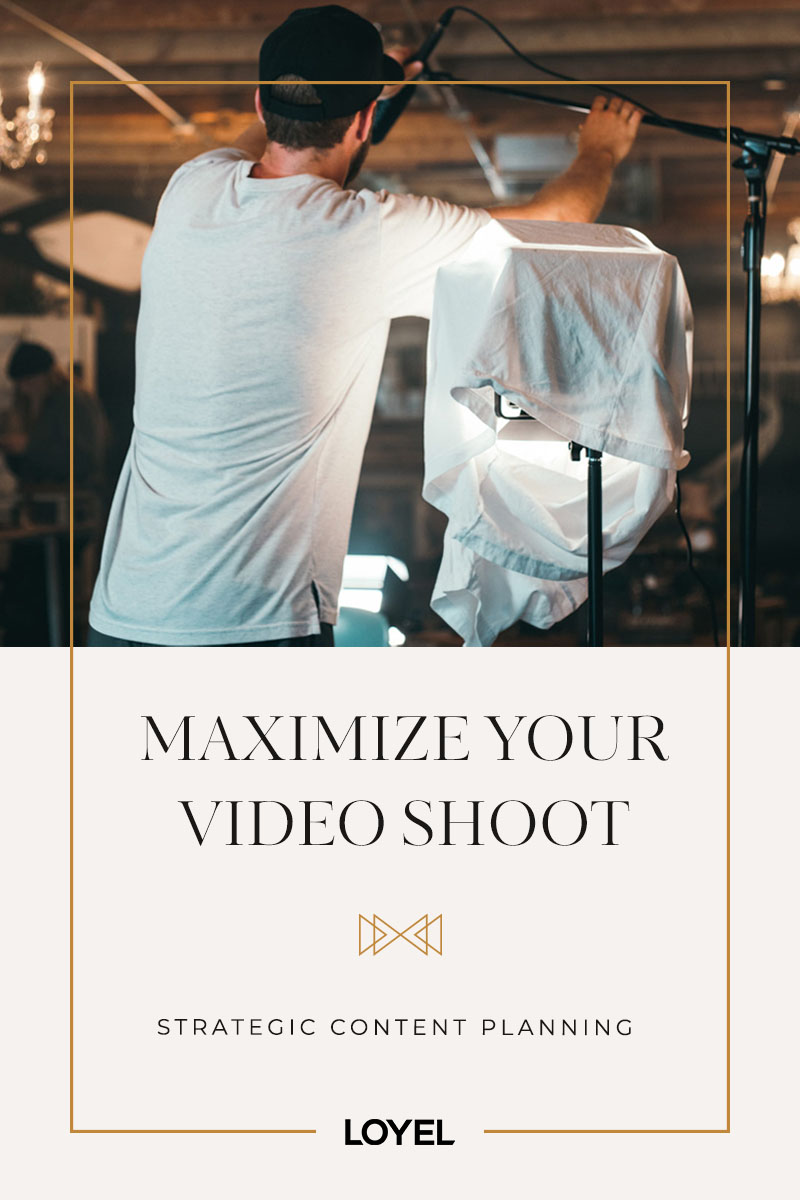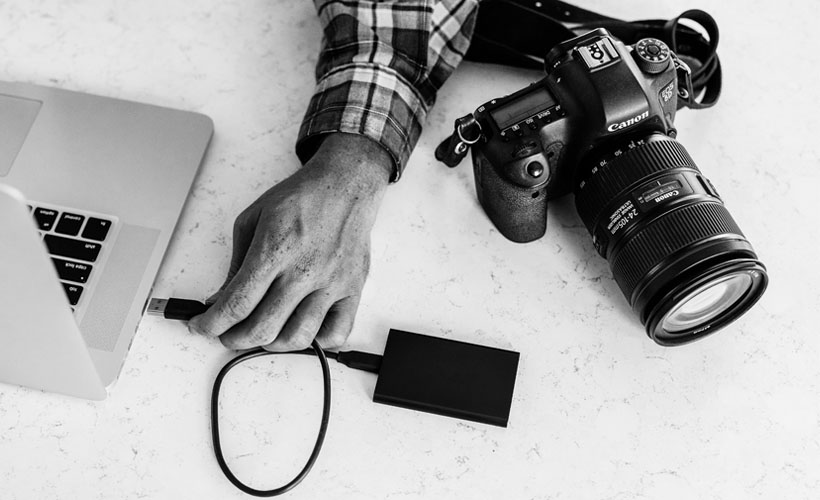Given how rapidly the marketplace is changing these days, you’ve probably put a lot of thought into new ways to promote your business. Maybe you’ve considered adding video to your marketing mix but put it off because the idea of a video shoot is a little intimidating.
When you take into account the careful and meticulous planning that goes into a professional shoot, you can bet all the details will be hammered out well in advance and you’ll be more than prepared before filming begins.

AUDIO: LISTEN TO THIS ARTICLE.
On top of that, the advantages of a first-rate shoot can extend well beyond the production of a single video, and they may raise the stakes high enough to persuade you to give it a go.
Here’s why. During a professional video shoot, a production crew will capture high-end footage, audio, and images to build your video. These elements take a considerable amount of time, effort, and resources to produce.
So then, why not make good use of this premium media—that presents your business in its best light—to expand your video campaign and create additional content to promote your business even further.
A well-planned video shoot can produce enough high-quality media to raise the profile of your business across the board.
Whether you’re outsourcing your video or have an in-house team handling the project, there’s a number of ways to help you get the most out of your video shoot.
Let’s take a look at how to accomplish this, starting with pre-production.
Planning Your Video Shoot
Just as the name implies, pre-production is the first stage of the video production process where all the necessary planning takes place before shooting begins.
During this stage, your video is outlined, scripted, and each scene visualized so that your crew knows what to shoot, in what sequence, and how it will be used.
While you’re working with your team and laying the groundwork for your strategy, it’s important to think beyond your first video.
Creating ongoing content relevant to your customers will help grow your audience as they engage with your content while also giving them reasons to come back for more.
Right from the start, consider how this first video will set the stage for future content.
You’ll also want all of your video content to have a consistent vibe and feel that’s identifiable to your brand and sets your business apart.
[ Forbes: 14 tips for businesses looking to ramp up their video marketing efforts ]
This is the stage where you’ll talk with your team about capturing additional elements. You’ll need to confirm that this will fit within the structure of your video shoot.
It shouldn’t be complicated, but it’s crucial to have a plan in place that ensures everyone is on the same page. So, make sure you do this during pre-production. You don’t want to do anything to undermine the direction and focus of your video shoot.
Make the most of this opportunity to capture more media and then work with your team to bake this into the plan.
You’ll want plenty of extra footage, commonly known as b-roll, captured during your shoot. This will provide the necessary assets for your editors to produce a powerful video and also supply the elements needed to develop more content later.
Pre-production is also the stage where you’ll finalize the crew and equipment necessary for your shoot.
Essential Gear for Your Video Shoot
There’s a common saying in the industry, “Garbage in; garbage out.” What this means, in essence, is your video is only as good as the elements used to produce it. Professional gear and a crew that knows how to use it make all the difference.
Let’s go over the essential gear for a professional video shoot.
Cameras
Ideally, using more than one camera allows your team to gather more dynamic footage. Consider the benefits of a two-to-three camera shoot.
For example, with interview-style footage, multiple cameras set up in different positions can capture your subject speaking from varied angles. This technique makes for a more engaging video and holds the interest of your viewer.
Multi-camera shoots also give your editors more options for creativity during post-production.
Lighting
Lighting can make or break your shoot. It’s one of the most important aspects of video production and paramount to the overall impact of your finished project.
Cameras need plenty of light to create quality footage. Even a well-shot video can look amateurish when poorly lit. More often than not, if you find a video engaging, lighting has a great deal to do with what draws you in and holds your attention.
A professional crew with lighting kits, diffusers, filters, and a working knowledge of how to create the right atmosphere will give your project the warmth and polish it deserves.
Sound
Nothing can make up for poor audio. A high-end video with poor sound quality can easily dissuade your viewer from watching your video to the end.
Like footage, it’s imperative to capture clean and clear audio, especially anyone speaking on camera during your shoot.
The two best options are a shotgun or “boom” mic, which is mounted on a long pole and held directly over the subject’s head—or a lavalier mic, which can be directly attached to your subject’s clothing.
Now that you know what to expect on set, let’s talk about how you can put any unused media to good use and maximize your investments.
Taking Advantage of Surplus Content from Your Video Shoot
There are several ways to use any media left from your video shoot to spread your marketing content across more channels. Look to your customers and consider how they consume content. Identify the types of content that will be most beneficial to them and start there.

Here are a few ideas to help you get started:
- Post short behind-the-scenes content to your social media channels to direct viewers to your website for the full-length video
- Capture vertical shots to create Instagram Stories
- Generate Google display ads and other social media advertising
- Pair audio with extra footage to create short six-second bumper ads for radio and television sponsorships and other promotional tie-ins
- Produce pre-roll and between-roll YouTube ads
- Create sidebar promos for your website
- Create sidebar ads for trade sites in your industry
- Include b-roll with press releases to news outlets for use as a backdrop for television news stories
- Use extra footage for event and trade show presentations
- Include media in e-newsletter campaigns
- Use archived footage to commemorate business milestones and incorporate these into your public relations campaigns.
As you can see, there are many ways to use these extra media elements gathered during your video shoot to boost your marketing efforts.
Now, there are a lot of good reasons to do this.

According to Forbes, more than 90% of customers would like to see more video content from brands and businesses. More than half of consumers say that watching a video makes them more likely to buy.
As many business leaders are discovering, video is an extremely effective medium for successfully marketing products and services.
Final Takeaways
When considering how to promote your business in an ever-changing marketplace, video can be an incredibly powerful medium.
With a little careful planning, you can utilize high-value media taken from a professional video shoot to create additional content to promote your business even further.
While planning your video shoot, make sure that your business objectives and the purpose of your video remain at the forefront. Capturing additional media elements should in no way interfere with the focus of your video shoot. You can put any surplus footage to good use after the production of your video is complete.
Here are a few final things to keep in mind for the day of your shoot.
▶ Wear classic-style clothing on the day of filming to extend the shelf life of your media,
▶ Avoid props like signage and calendars that date your footage.
▶ Communicate with your team throughout the process so that everyone is at ease and on the same page.
As we mentioned before, today, more than half of consumers say watching a video makes them more likely to buy, and it’s the medium they most often choose when researching products and services.
So, don’t miss this marketing opportunity for your business. With the information we’ve covered, you’ll be a pro!
Finally, if you want to learn more about the video production process, listen to AudioPost Episode #03: “How Video Content is Produced,” where we discuss the three principal stages of video production in detail.
Comments +